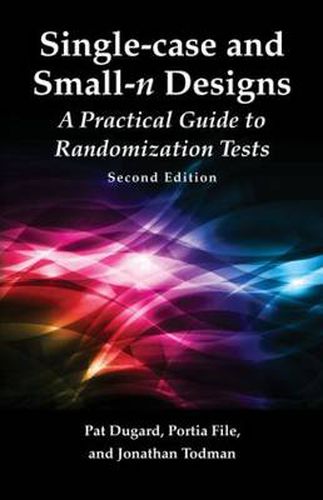Readings Newsletter
Become a Readings Member to make your shopping experience even easier.
Sign in or sign up for free!
You’re not far away from qualifying for FREE standard shipping within Australia
You’ve qualified for FREE standard shipping within Australia
The cart is loading…






This practical guide explains the use of randomization tests and provides example designs and macros for implementation in IBM SPSS and Excel. It reviews the theory and practice of single-case and small-n designs so readers can draw valid causal inferences from small-scale clinical studies. The macros and example data are provided on the book’s website so that users can run analyses of the text data as well as data from their own studies. The new edition features: More explanation as to why randomization tests are useful and how to apply them. More varied and expanded examples that demonstrate the use of these tests in education, clinical work and psychology. A website with the macros and datasets for all of the text examples in IBM SPSS and Excel. Exercises at the end of most chapters that help readers test their understanding of the material. A new glossary that defines the key words that appear in italics when they are first introduced. A new appendix that reviews the basic skills needed to do randomization tests. New appendices that provide annotated SPSS and Excel macros to help readers write their own or tinker with the ones provided in the book. The book opens with an overview of single case and small n designs – why they are needed and how they differ from descriptive case studies. Chapter 2 focuses on the basic concepts of randoization tests. Next how to choose and implement a randomization design is reviewed including material on how to perform the randomizations, how to select the number of observations, and how to record the data. Chapter 5 focuses on how to analyze the data including how to use the macros and understand the results. Chapter 6 shows how randomization tests fit into the body of statistical inference. Chapter 7 discusses size and power. The book concludes with a demonstration of how to edit or modify the macros or use parts of them to write your own. Ideal as a text for courses on single-case, small n design, and/or randomization tests taught at the graduate level in psychology (especially clinical, counseling, educational, and school), education, human development, nursing, and other social and health sciences, this inexpensive book also serves as a supplement in statistics or research methods courses. Practitioners and researchers with an applied clinical focus also appreciate this book’s accessible approach. An introduction to basic statistics, SPSS, and Excel is assumed.
$9.00 standard shipping within Australia
FREE standard shipping within Australia for orders over $100.00
Express & International shipping calculated at checkout
This practical guide explains the use of randomization tests and provides example designs and macros for implementation in IBM SPSS and Excel. It reviews the theory and practice of single-case and small-n designs so readers can draw valid causal inferences from small-scale clinical studies. The macros and example data are provided on the book’s website so that users can run analyses of the text data as well as data from their own studies. The new edition features: More explanation as to why randomization tests are useful and how to apply them. More varied and expanded examples that demonstrate the use of these tests in education, clinical work and psychology. A website with the macros and datasets for all of the text examples in IBM SPSS and Excel. Exercises at the end of most chapters that help readers test their understanding of the material. A new glossary that defines the key words that appear in italics when they are first introduced. A new appendix that reviews the basic skills needed to do randomization tests. New appendices that provide annotated SPSS and Excel macros to help readers write their own or tinker with the ones provided in the book. The book opens with an overview of single case and small n designs – why they are needed and how they differ from descriptive case studies. Chapter 2 focuses on the basic concepts of randoization tests. Next how to choose and implement a randomization design is reviewed including material on how to perform the randomizations, how to select the number of observations, and how to record the data. Chapter 5 focuses on how to analyze the data including how to use the macros and understand the results. Chapter 6 shows how randomization tests fit into the body of statistical inference. Chapter 7 discusses size and power. The book concludes with a demonstration of how to edit or modify the macros or use parts of them to write your own. Ideal as a text for courses on single-case, small n design, and/or randomization tests taught at the graduate level in psychology (especially clinical, counseling, educational, and school), education, human development, nursing, and other social and health sciences, this inexpensive book also serves as a supplement in statistics or research methods courses. Practitioners and researchers with an applied clinical focus also appreciate this book’s accessible approach. An introduction to basic statistics, SPSS, and Excel is assumed.